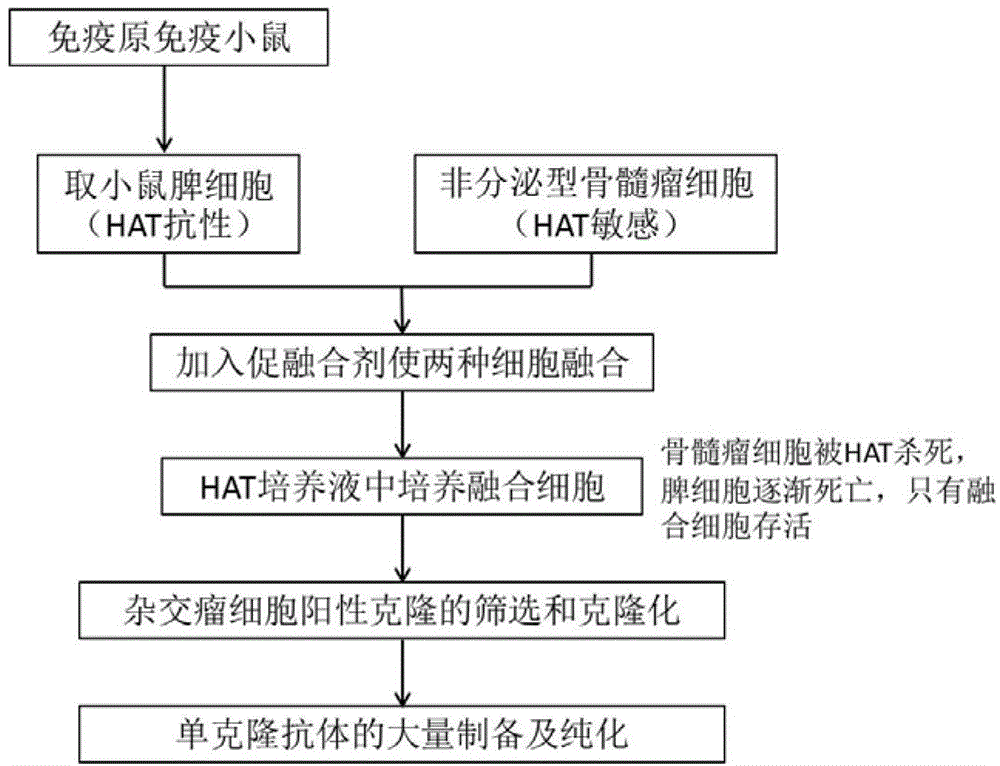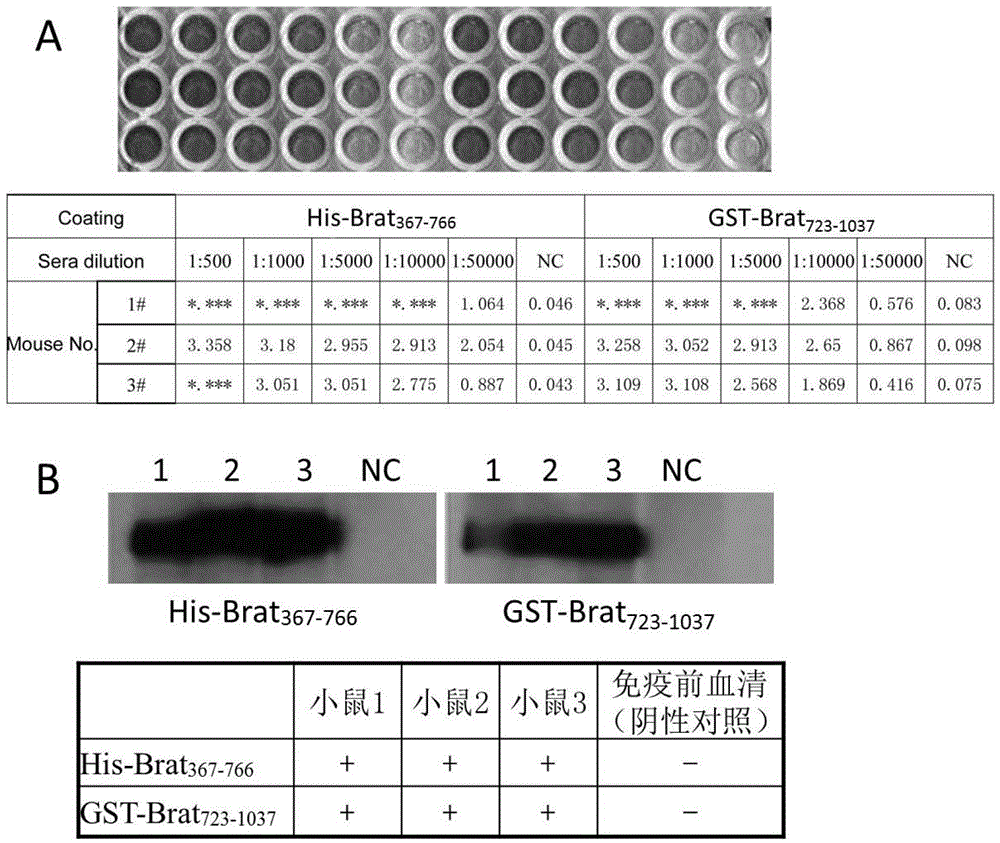Brat-protein-resistant monoclonal antibody and application
A monoclonal antibody and protein technology, applied in the direction of immunoglobulin, microorganism-based methods, biochemical equipment and methods, etc., can solve the problems of multiple bands, high specificity of monoclonal antibodies, and unstable production
- Summary
- Abstract
- Description
- Claims
- Application Information
AI Technical Summary
Problems solved by technology
Method used
Image
Examples
Embodiment 1
[0018] Embodiment 1, the preparation of the hybridoma that secretes anti-Brat protein monoclonal antibody
[0019] 1. Immunization of Mice
[0020] Selection of mice: select healthy Balb / c female mice homologous to the used myeloma cells, and the age of the mice is 8-12 weeks.
[0021] Selection of immunogen: select amino acids 367-766 and amino acids 723-1037 of Brat protein as immunogens, wherein, the amino acid sequence of Brat protein 367-766 is shown in SEQ ID No. 1 in the sequence table, and the amino acid sequence of 723-1037 is shown in SEQ ID No. 2 in the sequence listing.
[0022] The 367-766th amino acid immunogen of Brat protein with histidine tag is His-Brat 367-766 Preparation: Using the cDNA of the full-length brat gene as a template, design primers, PCR amplify the gene sequence shown in SEQ ID No.3, and insert the sequenced correct gene fragment into the EcoRI and XhoI enzymes of the expression vector pET30a with His tag Between the cutting sites, a recombi...
Embodiment 2
[0041] Embodiment 2, preparation and performance test of monoclonal antibody
[0042] 1. Preparation of monoclonal antibody
[0043] After intraperitoneally injecting 3A9 hybridoma cells into Balb / c mice, the ascites was collected and purified by protein-G immunoaffinity chromatography to obtain the monoclonal antibody, which was named Brat-3A9.
[0044] Second, the sensitivity detection of monoclonal antibody
[0045] The sensitivity of the monoclonal antibody was detected by enzyme-linked immunosorbent assay (ELISA).
[0047] Recombinant protein His-Brat 367-766 and GST-Brat 723-1037 A gradient diluted to 100 ng / well with the coating solution was added to the wells of the polystyrene enzyme-linked detection plate. After coating overnight at 4°C, the washing solution was washed 3 times.
[0048] 2. closed
[0049] Add 200 μl of blocking solution to each well, wash 3 times at 37°C for two hours (or overnight at 4°C), and pat dry.
[0050] 3. ...
PUM
 Login to View More
Login to View More Abstract
Description
Claims
Application Information
 Login to View More
Login to View More - R&D
- Intellectual Property
- Life Sciences
- Materials
- Tech Scout
- Unparalleled Data Quality
- Higher Quality Content
- 60% Fewer Hallucinations
Browse by: Latest US Patents, China's latest patents, Technical Efficacy Thesaurus, Application Domain, Technology Topic, Popular Technical Reports.
© 2025 PatSnap. All rights reserved.Legal|Privacy policy|Modern Slavery Act Transparency Statement|Sitemap|About US| Contact US: help@patsnap.com



